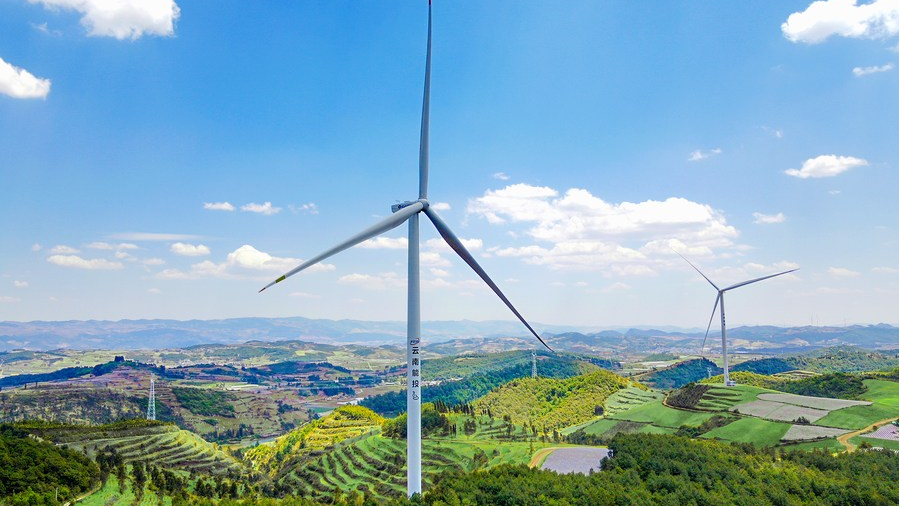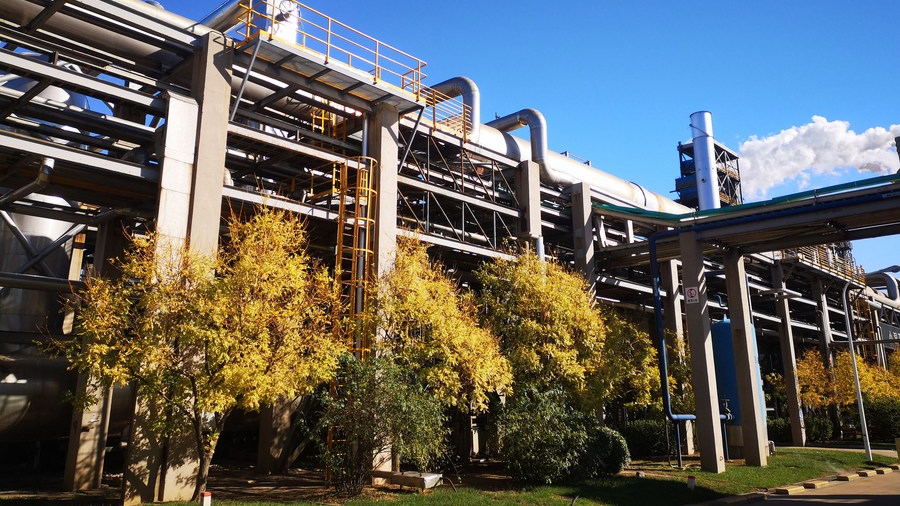
The wind turbines of Honghe Yongning wind power plant in Honghe Hani and Yi Autonomous Prefecture, southwest China's Yunnan Province, May 16, 2023. /Xinhua
The wind turbines of Honghe Yongning wind power plant in Honghe Hani and Yi Autonomous Prefecture, southwest China's Yunnan Province, May 16, 2023. /Xinhua
Editor's note: Lu Jianfei, a special commentator for CGTN, is a senior consultant and specializes in energy, SOE reform, and corporate governance. She holds a doctorate in management from the Renmin University of China. The article reflects the author's opinions and not necessarily the views of CGTN.
Chinese President Xi Jinping, who is also general secretary of the Communist Party of China Central Committee and chairman of the Central Military Commission, presided over a meeting of the Central Commission for Comprehensively Deepening Reform under the 20th CPC Central Committee on July 11. At the meeting, a series of reform measures were adopted nationwide, covering building a new system for a higher-standard open economy, agricultural and rural modernization, energy efficiency control, and deepening reform of the power system.
Noting that China's ecological civilization construction has entered a critical period with carbon reduction as the key strategic direction, Xi, who is head of the commission, called for improving the regulation of total energy consumption and intensity to gradually shift to a dual control system over the amount and intensity of carbon emissions.
The first time the dual control system of total energy consumption and energy intensity was brought into binding target was the 11th Five-Year Plan (2006-2010). The 13th Five-Year Plan for Energy Development (2016-2020) further elaborated the target by proposing that by 2020 the total energy consumption should be controlled with 5 billion tons of coal, and grows by more than 2.5 percent per year while GDP per unit of energy use should fall by 15 percent. The government subsequently set the target of total energy consumption and energy intensity for different provinces, autonomous regions, and municipalities. Moreover, the energy-saving index was added to the performance evaluation system of local governments. Initially, there were some problems such as some national key construction programs with high energy consumption had to be hung up for meeting the evaluation target. But the government soon remedied the situation by introducing new policies with more flexible and refining measures.

The view of the plant of Cabot Chemicals (Tianjin) Co., Ltd. in north China's Tianjin, October 10, 2022. /Xinhua
The view of the plant of Cabot Chemicals (Tianjin) Co., Ltd. in north China's Tianjin, October 10, 2022. /Xinhua
The whole world has witnessed the remarkable achievements that China has made. According to "Responding to Climate Change: China's Policies and Actions," China has rapidly reduced its energy consumption intensity, and the reduction from 2011 to 2020 reached 28.7 percent. From 2016 to 2020, China fueled an average annual economic growth of 5.7 percent with an average annual energy consumption growth of 2.8 percent, and the amount of energy it saved accounted for about half of the global energy savings in the same period.
The differences between dual control systems of energy consumption and carbon emissions lie in two aspects. One is the measure units. The dual control system of carbon emission is based on carbon while the other is built on energy. The former requires more accurate data since the measure of carbon emission is more difficult than energy consumption. The other is the contributions to carbon peak and carbon neutrality goals. The dual control system of carbon emission promotes carbon reduction.
Considering the carbon emissions are mainly generated by fossil fuels, the shift to a dual control system over the amount and intensity of carbon emissions will accelerate the energy decarbonizing transition in China. By highlighting the orientation of reducing fossil fuel consumption, it will boost renewable energy development and energy structure optimization. Moreover, it is more compatible with China's realities. Taking energy consumption used as raw material production, for example, only 20 percent of carbon will be emitted while the left 80 percent of carbon will be preserved in the raw material production. It is inaccurate to include the entirety of carbon in the assessment of the dual control system of energy consumption. To deduct the share of energy as raw material will better reflect China's actual situation of energy consumption. And it will be achieved in the context of the carbon emission dual control system.
Rome was not built in a day. So does the shift to a dual control system of carbon emission. Promoting carbon market construction will be the booster. Firstly, it is vital to expand the transaction scope with more industries and businesses. Effective carbon prices only will be established based on more diverse industries such as petrochemicals, chemicals, construction materials, steel, and aviation. Secondly, strengthening and improving the correlative system construction is appealed. With more specific guidelines, carbon market involvers will be motivated in the transactions.
(If you want to contribute and have specific expertise, please contact us at opinions@cgtn.com. Follow @thouse_opinions on Twitter to discover the latest commentaries in the CGTN Opinion Section.)